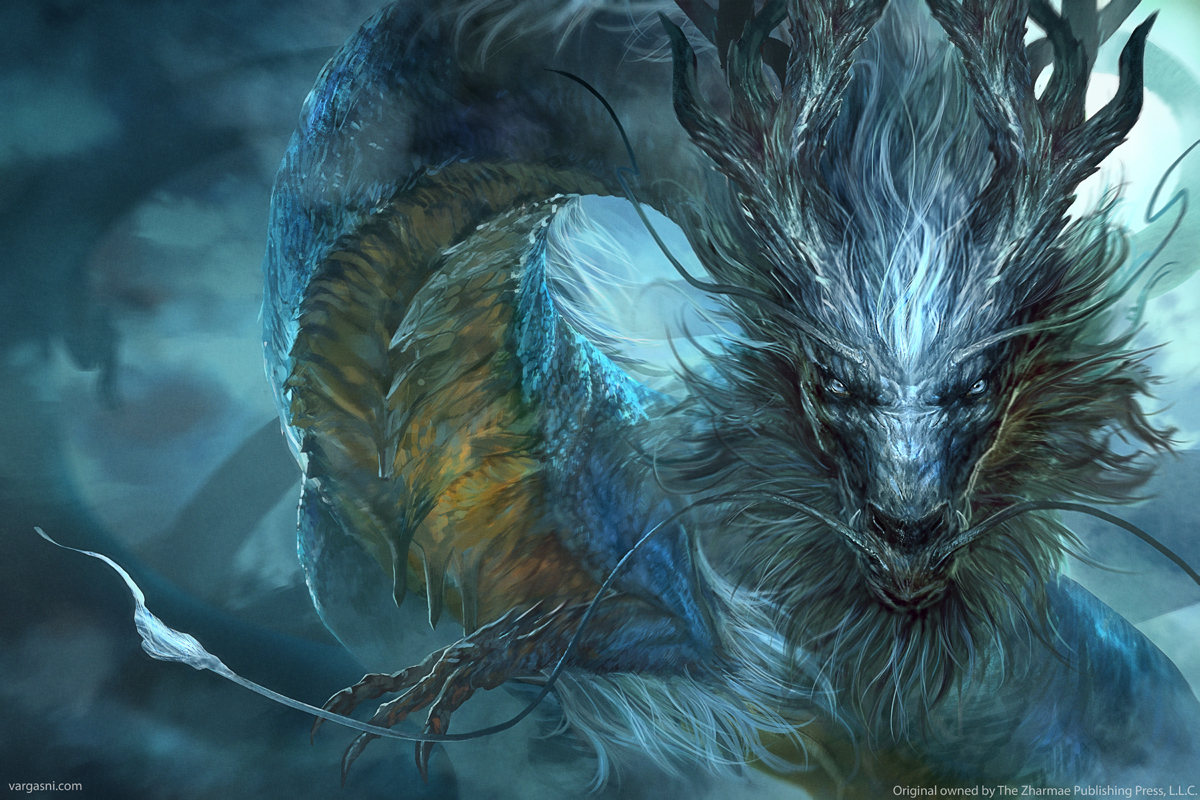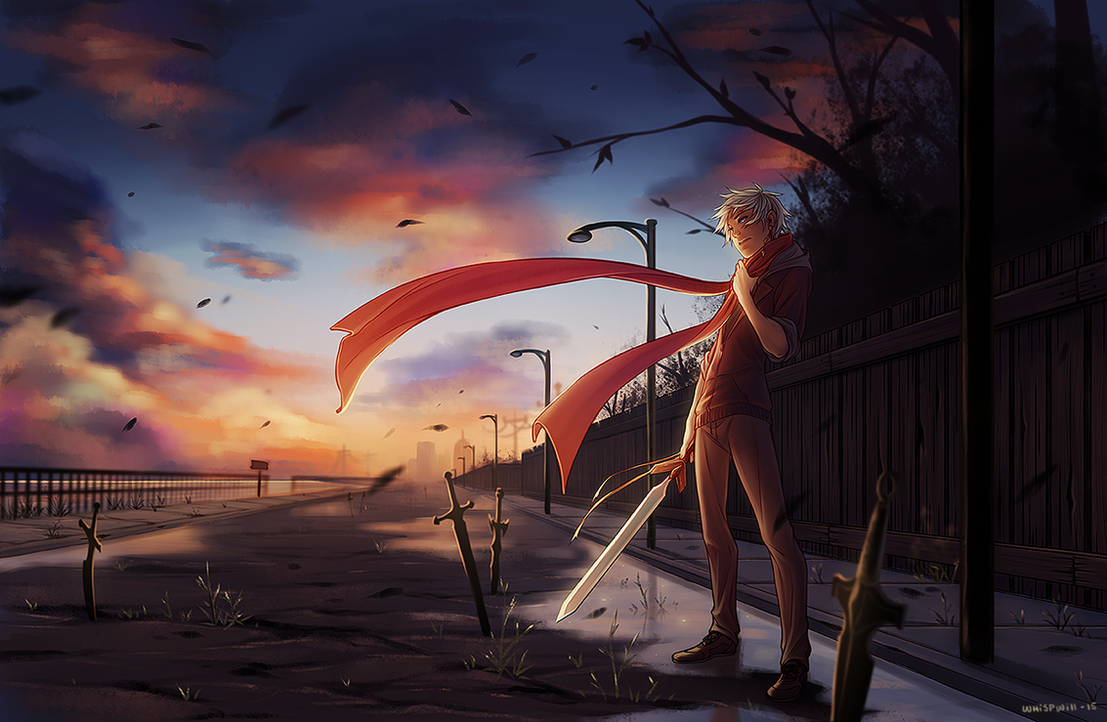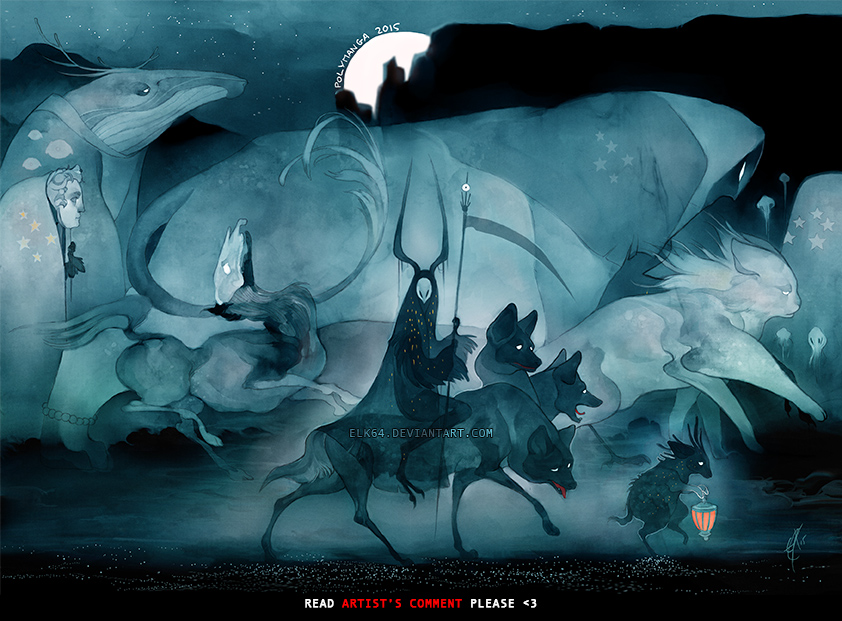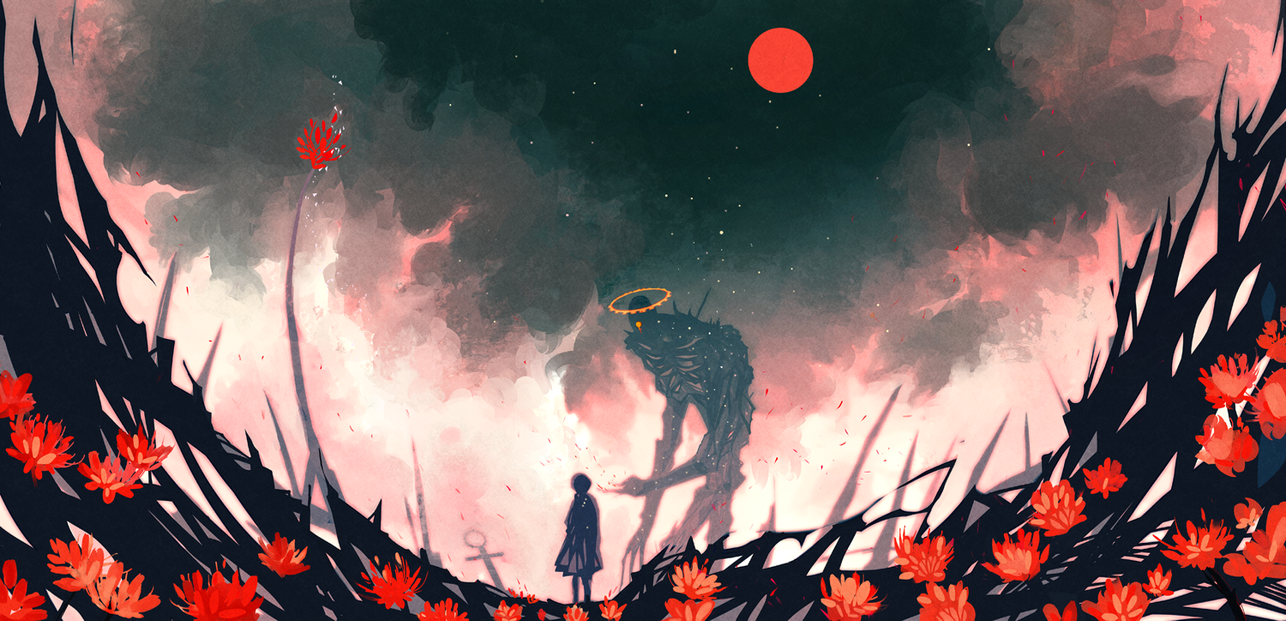Streak Club is a place for hosting and participating in creative streaks.
The Lights in the Sky is a first person story driven resource management game. Players take the role of an unnamed protagonist living in the technologically advanced city of Sol.
While Sol initially appears to be a walled city with a strange sky players learn over the course of the game of the reality. Approximately five hundred years in the past scientists stood on the brink of the world falling apart; over population and mismanagement of resources had lead humanity to destroy our habitat. With limited resources however they could only restart natural life on the planet once. Fearing that the desperate populace would simply destroy their last salvation they created one hundred machine cities, cities on tracks loaded with the last resources they could spare. Believing that we were beyond saving they loaded each city with an amnesiac population. Each machine city had an AI and a three goals, first to roam the world keeping its populace alive for as long as possible. Second to facilitate a society as dictated by its assigned role and finally, once it was unable to reliably continue to sustain life it would elect a Navigator who would be told to get the city to a predetermined location, each city has a fraction of the information needed to find this location so it is necessary to interaction with other cities to get to the location. The AI would assess the Navigator as they progressed to the location in the hope that they would display the qualities which could lead humanity and its world out of the current cataclysm. If the AI believed this to be the case then it would activate a process to restart natural life on the planet.
The player is the Navigator of his or her city and must manage their resources and (unknowingly) prove themselves worthy of rebooting our planet.
There are three key mechanics which are used to manage Sol. The first is the players tattoo. The tattoo represents the night sky, referring to the ability in the past of people to navigate by the stars but in this instance also being a nanotechnology that gives the player the rights to control the machine-city. There are many choices to be made as the player progresses, from how they solve problems to their interactions with the people of their city all of this is watched by the machine cities AI activating nodes in the tattoo which correspond to constellations. Once a full constellation is lit the AI can grant access to new facilities in the city, assisting the player in their journey.
The second is the resource management of the game. Machine city has limited resources in its silos, it is able to identify and collect resources scattered around the world at the players behest however it takes time to move to these and there is still the end game goals to be reached. Players must constantly manage their resources using both internal systems and research which can be developed using collected minerals as well as locating external resources found on the world map.
The final mechanic players must manage is that of their people. The people of the city and those of other cities you come into contact have to be managed in one way or another. Players have a great deal of freedom in how they let this play out, they can be open and honest with the people, use force to enact their will, manipulate from the shadows or even keep the workings of the city a secret from the unsuspecting populace operating entirely alone. There are many different ways to approach each situation however mismanaging the populace can have adverse effects such as rioting or assassination attempts.
As players manage these mechanics they will need to navigate Sol via a world map located at the heart of the city, choosing how they will proceed and manage the various events that their movements will lead to such as other cities. Players will be able to interact with cities they come across in a variety of ways both personally or by sending other characters to them to do such things as infiltrating them to steal information, attacking them, talking to them diplomatically or scavenging parts from a damaged or destroyed city.
A variety of difficulties will be available with the penultimate difficulty allowing only one save and only one life for the player (any death is game over permanently)
The Lights in the Sky aims to give players a lot of choice, letting them run an experimental city in almost any way they want. Players may feel tension if they choose to personally invade another city using stealth, they may feel afraid around a rebellious crowd or powerful as they stand at the head of supportive military state.
Players may feel the exhilaration of taking on a mission on another city themselves or the tactical satisfaction of having sent the right person for the job. The mind-set and experiences that the player will have vary hugely depending on the approaches the player chooses in dealing with the problems presented to them which is the real draw of the game. Players can approach every problem in the way they feel is best, the aim of this is to make players become attached to their city in the same way they might become attached to an RPG character but on a much deeper level filled with responsibility.
●Play the way you want, many choices with many different ways to approach them
●RPG character building with a city, see how each person reacts to your choices
●Extremely punishing difficulties for those who want a strategic challenge
●Rewarding resource management, see up close whether your people flourish or die.

Zambezi is a first person virtual reality title based around the concept of players travelling from the source to the foot of the Zambezi River in ancient times.
Players being at the source of the river in canoes and follow the river in a linear story driven experience as they travel down the river on an expedition, taking a look at the varied culture and threats of the rivers length while using the VR systems to create a deep connection with the games events. Players will need to manage their resources as they travel and puzzles will be presented in a variety of interactions during game play such as conversation or riddles, finding ways to move through a rapid pieces of river or sneak through a pod of angry hippos.
Zambezi is primarily designed to provide deep immersion while allowing players to see a popular destination through an intense fictional storyline.
●Virtual Reality
●Strong Story
●Beautiful Artwork

Nocturne is a 2D puzzle platformer based on the composition of music. Players must help a group of Nocturnals (creatures of the forest that sleep during the day in darkness) traverse the Twisted Divide. A wicked and scintillating forest that twist in upon itself.
The Nocturnal will walk forward indefinitely, they are blind and navigate purely by sound. Normally this works to their advantage but the Twisted Divide is a place much more hostile place filled with dissonant echoes and horrifying symphonies. Players take on the role of the Melody, the Nocturnals mysterious god who is able to lead them through the Twisted Divide. The Melody does this by composing music to guide the Nocturnals. But the compositions don't just guide the Nocturnal, they alter the landscape of the Twisted Divide. Players compositions are converted into imagery similar to visualizers common in modern media players, become the wind or the water of an area and shaping the way the landscape moves, potentially hindering or helping the nocturnal on their path.
The key to Nocturne is how players are taught, if the game only appeals to composers or musicians it won't succeed as a design. Carefully teaching players how compositions work through simple development of compositional knowledge using game levels to teach players through a mix of trial and error and guided examples. If the game can successfully teach players even simple aspects of this while using the engine to gloss input into beautiful tracks players will be put in a state of wonder as they try to create interesting and beautiful solutions to levels. Combining this with the potential for players to share their tracks and playthroughs either using an internal system or common streaming or video sharing services
●Music made by the player
●Unique art style
●Alternate and complex puzzler game play

Malevolence is a real-time tactics game focused on deck building and effective tactical decision making. Players have access to three unique factions known as the Bastion, Wildwoods and Oath breakers.
Players are placed in a dark reality in which humans struggle to exist, some live in the steam city of Bastion and pray to their machines and iron walls. Some turn to nature and live among tower treants and others still turn to the power of death. Players choose between the three unique factions and build a "deck" of units using points system where different units cost a different number of points. Similar to chess players place their pieces at the start of a match and then play it out in real time. Matches revolve around a variety of map dependant and partially randomised events which earn the players points. Unlike common RTS games there is no base building, players use the points they earn in game play to purchase reinforcements from success. Without success its harder to authorise further reinforcements, players still earn points while losing, but they earn less.
To augment their reinforcement's players can also draft unique powers and abilities such as artillery strikes, magical typhoons or meteors of rotting flesh.
Malevolence plays on two popular aspects of strategy games. The deck building of card games and the micro management and tactical decision making of real time strategy. Malevolence requires careful deck building, side decks will be available similar to common TCGs but mostly drafting armies will require careful strategic choices mixed with a strong style and understanding of the players preferences. Controlling armies will require calm control of multiple units similar to RTS but with a strong preference to objective based strategy. Combining these two Malevolence endeavours to perfect the genre
●Deck building similar to popular TCGs
●Fast paced strategy similar to RTS
●Intense objective based combat

Draconic is a third person adventure game in which players take on the role of a dragon from birth to death.
Players choose their origin country and begin their lives. The origin will influence the kind of dragon they are (Chinese, European, etc) and the abilities they have. They will then be born and play out the early phases of the game as a child. Once they graduate to adolescence they will leave their home to find a territory of their own. They will defend this territory from other dragons, hunt and interact with the wildlife and people of their environs. How players interact with the world will dictate how the world interacts back. Players can become terrifying monsters that everyone fear, they can become the legends spoken by hunters out after dark or they can become benevolent saviours of the area.
Draconic is about exploring the mythology of dragons and how people perceive them. In fiction there are kind dragons, evil dragons and elusive dragons. Players are encouraged to explore the variety of ways they can explore and interact with the world as a creature that is viewed differently in every society and culture to have existed.
●Deep sandbox environment
●Unique take on a favourite mythological creatures

Conversation is a first person narrative in which players interact with a series of AIs and try to determine if they are sentient or not.
Players are provided an environment and a subject to converse with. Some are human, some are artificial intelligence. Players must use their environment and logical skills to guide conversation and determine if the subject of their conversation is AI or not. Subjects will being with simple easy targets and will slowly work up to questionable and more difficult subjects, essentially attempting to best equip players to perform Turing Tests
Conversation is designed to make people think about what makes us human and how you could catch an AI on this, something that is regularly attempted by Turing tests. As players advance through levels they will learn the basics of telling AI from Humans but as they delve deeper they will need to apply these basics and strong logic to determine the answers to each scenario.
●Pure Logic Puzzles
●Interesting look at what separates humans from AI

Little Big is a story about a young girl and her adventures with a giant for Virtual reality. Players on take on the role of a giant (Mr. Big) and must carefully move the "Little" a young girl through the environment without directly touching her or letting her fall into the harmful traps and dangers in the areas she adventures in
Little Big takes advantage of the development of VR systems to let players take first person of Mr.Big the giant. Big must shift the map around and use his body to safely ensure she gets from the start of the level to the end without being hurt from the large number of traps and dangerous things throughout the level. Players will do things like using their limbs as makeshift bridges or shifting boulders from the path of the little girl.
Little big is a basic escort puzzler with a twist, adding in the unique roll of Mr. Big who is essentially a scene director? Players must safely get Little from one side to another using their body as a tool to achieve this goal
●Unique Giant mechanic
●Interesting use of VR

237.15 Below is a story based survival game. Players take on the role of Kelvin an engineer stationed at the new Helium Harvesting Station 237.15, Absolute Zero. Kelvins convoy is attacked during an expedition and he is stranded in the hostile wastes.
237.15 Below is a survival game, players must manage their heat and travel through a hostile world to reach the station. As they progress through the game players will need to use their engineering skills to create makeshift vehicles and weapons powered by helium to make their way back to the station. They will traverse a variety of challenges as they try to navigate the Tundra such as icy cliffs, volatile helium geysers and varieties of relentless alien creatures.
237.15 Below is a survival game with a strong story element. Players will need to combine elements of the environment to solve problems, because of this they will need to be searching for pieces to work with constantly and solutions to the obstacles that they are presented with. Maintaining the emotional aspects of the "struggle" to survive is a key part of most survival games and this scavenging aspect combined with the constant requirement to manage the player's heat depicts and conveys this struggle in two convincing mechanics
●Story Based Survival
●Complex crafting system
●Intense atmosphere

Impenetrable is a player versus AI first person strategy game in which players attempt to create a fortress that cannot be breached.
Players begin as a single builder unit, they must use the funds they are given to build a fortress that cannot be breached. Each round a wave of enemies will be released and will try to breach the fortress over a period of 24 hours. Players cannot kill the enemies but must instead design a fortress that cannot be breached using non-lethal traps, puzzles and well-designed wall systems as well as hiring NPCs to act as guards. Players have five minutes between waves to prepare or they can press the ready button to start earlier. Each wave has strengthened abilities and smarter AI that will search for ways to breach the player's defences, culminating in full on siege warfare. Players receive damage to their king if an enemy breaches the defences and lose if the king dies, every enemy that breaches the walls also results in less funds available to player next round.
A player versus player variant will also be available with players playing as infiltrators (or potentially 1v1 with players creating the AI for the infiltrators) and builders facing off in ten wave matches.
Impenetrable is a non-combat game based around the act of level design. Players act as the level designer and try to block all the methods the AI might try. Mod-able AIs will be a must for players who wish to push their abilities and saving set ups to share and have others try and infiltrate will also be an excellent way to proliferate the community. At its core Impenetrable seeks to hit the same sandbox level building appeal of games such as ARK or Minecraft while providing a smaller scope and clearly defined goals.
●Unique system, build puzzles and have AI test
●Easily modified AI
●Unique take on player versus player
![]()
Green House is a dynamic incremental game in which players control a greenhouse that specialises in creating genetically modified plays for specific purposes.
Players start with a basic green house and some money, players must create plants that fit the needs of clients who come to the greenhouse by combining a up to three plants. As they make money they can develop new plants by buying them in or splicing two plants together permanently allow them to grow more of them (where as the normal combinations will be infertile)
Green House is a simple incremental game with its primary draw being the same as all incremental games, a simple but enjoyable time sink for players. Its unique selling point is splicing two plants together permanently, creating these new plants creates a form of tech tree allowing players to combine more complex parts for more complex solutions to problems
●Plant themed
●Splicing
●Simple

Red Snow is a multi-player third person team based racing game in which players take on the role of skiing or snowboarding assassins attempting to kill each other
Players use sharpened skis or snowboards to try and assassinate each other before they get to the end of the race. To assist them players are able to pick up power ups as they go through the course. These are traditional racing power ups that will slow/cripple enemies or boost the player, there are no direct damage power ups. To damage and assassinate their opponents players will need to perform tricks. When players launch themselves into the air off ramps or using launch pads they can perform tricks through different inputs. If the players trick successfully contacts an enemy player it does damage to them. If a player manages to hit an opponent's head they are instantly decapitated. Once a player dies they are removed from the game. Teams score points for each player that crosses the finish line and a bonus point is awarded to the first player to cross the finish line.
Red Snow is a hectic brawling racer designed to have teams attempt to slaughter each other. Taking the traditional brawlers timed death match and translating the timer into a length of track which players have to progress down lends the game a unique combat dynamic, as if the arena changed dramatically over time. Players will become familiar with the courses as they play more leading to timed attacks on opponents in areas they feel most comfortable in. Overall Red Snow aims to be a fun brawler with a unique take on the genre
●Hectic brawling combat
●Unique take on timed play using a mountain track

Overview:
Crushing Victory is a tug of war game for up to four players in which players build units which progress along a single lane fighting each other. To collect resources for these units players solve matching puzzles.
Game play:
Up to four players can partake in matches with players facing off against one another in a cross shaped formation. At the center of the cross is an objective, the player with the most units alive at the objective begins to capture it and once it is captured it slowly damaged the opponents base. Players can produce a variety of units from infantry to vehicles and aircraft each of which have unique traits and abilities. To purchase these units players solve matching puzzles, matching chains of three similar minerals together to collect those minerals with bigger chains rewarding more minerals. The minerals are then spent to purchase and upgrade units. Once a unit is purchased it will be constantly produced, purchasing additional units will upgrade the number that are produced while purchasing upgrades will improve the strength of the units.
The game ends when only one player remains alive
Mind Set
Crushing victory is a hectic strategy game in which players endeavor to match items and then produce units. They must match their unit production to counter their opponents and control the middle for the longest period possible. Careful planning of the games user interface will be very important to the success of the game as there is a lot going on

Viracy is a first person virtual reality game based on the Steam VR. Players take on the role of a Virus who awaken in the D:/ Universal Service Bus. Players take over the D:/ drive and set out to find the meaning of their life while expanding their influence
Viracy uses the Steam VR to handle interactions and combat. The hand based controllers in the VR feed information for the games combat system with arm motions being fed into the game through the hand held controllers to allow for sword or gunplay. A system called combat synchronisation is used to help the feeling of combat where players can move around the room slightly to allow for a more satisfying combat experience in terms of movement but leaving the combat sync zone slows the game to allow players to re-centre themselves. Outside of this limited movement players will use thumb sticks to move, this is to allow for expansive environments without losing the fine-tuned components of combat the VR system can bring. The game has two states. Ship and Combat. Ship is a controlled state where players interact with their "crew" who are other viruses they join forces with or capture. The player is mute and answers yes or no with a nod of shake of their head detected via the VR headset. They can build and customise the ship to their liking and equip and prepare their crew before combat. When going into combat on the ship the players use a war table which they manipulate using their hands. Players define three squads of five, two of which they set AI tactics for while the third they lead into combat. Once this is done players enter combat, they will receive information through diegetic UI elements and a commentary from their shipboard tactical advisor.
Viracy is all about deep immersion it uses the VR system and careful design to deliver this. Considerations such as being mute are important because it would be difficult to retain immersion if the wrong voice is coming out of your face. The game has no HUD instead opting for a specific art style which has stark contrasts. Enemies and blue and white with humanoid round features to look friendly (anti-virus) while allies are black and red with sharp edges (viruses). The environments are largely white with sharp edges, similar to what you might find in a hospital. Because of the simplicity of the art style it is very easy to feed the player diegetic information throughout gameplay.
While doing this Viracy aims to explore the grey space available to it. Players can embrace the fact they are a virus and destroy everything, they can travel looking for the reason for their creation or they can try and find a place where they can be safe
●Deep immersive gameplay
●Virtual Reality
●Intense combat
Thicket is a third person puzzle game. Players play as twins who ventured into Thicket, a forbidden area of their town accessible by jumping their back fence. When the twins Dorian and Darian get lost in Thicket Darian is drawn into a strange anomaly and disappears. Dorian returns home to find his parents are denying his brother ever existed. He must find a way to get his brother back by venturing through Thicket and unlocking its secrets.
Players progress in sequences as one of the two twins (alternating). Darian is thrown into a strange version of Thicket rife with magic and strange creatures. Darian has to fight to survive and learn to control the wild magic of thicket. Dorian on the other hand must explore and solve the mystery of the technically advanced Thicket he has access to, the remnants of a research facility.
Darian will gain experience through completing activities and level up as the player chooses to assist him in traversing Thicket, changes that Darian makes to his world have a butterfly effect on Dorians world.
Dorian will have to collect information through exploring Thicket and studying outside of Thicket to solve the puzzles that will lead him to finding his lost brother, using the technology in Thicket Dorian can change the version of Thicket Darian is in (such as different monsters or environmental themes).
While levels will begin with sections that only have access to one of the characters later levels will have players use both characters simultaneously by switching between them as needed.
Thicket aims to get characters involved in the narrative, neither protagonist is aware the other is looking for them and the story is told on both sides as they slowing unravel their part in the narrative. Both protagonists offer unique and interesting gameplay based in entirely different settings.
●Unique story told from two perspectives in two different biomes
●Two characters to play as and develop in different ways
●Wide variety of puzzles based on the way characters develop and the different areas they have access to.

Grandmaster is an interactive mystery graphic novel similar to those made by Tell Tale games. Players take on the role of "The King" a person trapped in a shopping complex by a mysterious voice using a strange mist. The complex is turned into a game of chess by the mist which each king must attempt to win to save the people in the complex, the trick being no one knows who anyone else is.
The complex is populated by three factions, Team Black, Team White and innocents. Innocents are people who are do not belong to either faction but can still be useful. Players may choose a side however they do not know who in the complex belongs to which faction. Because of this players must use logic and investigative skills to determine which piece players are and which faction they belong to before moving them to try and put the enemy king in checkmate. Cheating is allowed as long as the other player is not aware of it (AKA cannot prove that the player cheated) and the mysterious voice isn't aware of it. If either of these stop them cheating penalties are applied (if the opposing king realises the piece is lost, if the voice realises players lose their turn).
The player is free to move around to organise moves and interact with the pieces over the course of the day however each interaction takes time and at the end of each day they must return to their "position" on the board for the moves to take effect. Once the moves take effect the voice will give a commentary of the turn which will provide additional hints to help players infer information.
There are three ways the game ends. The player loses. The player wins or the player finds another way out of the situation.
Grandmaster is a game about logical inference and collecting information similar to popular traitor games such as Mafia and Resistance. It draws player into logic puzzles to help them derive information and solve the puzzle. This is made trickier by the fact the player can cheat if they aren't caught which will happen often in the early portions of the game where players will have trouble catching or being caught cheating either intentionally or accidentally by other players though they will be able to gather information based on the successes and failures of these moves mixed with the voices commentary. Underlying the tense tactical struggle both in the game of chess and the information game players may also learn more about the mysterious voice who has created the scenario and seek to unravel that mystery.
●New take on the common traitor mechanic
●Highly tactical
●Deep story with player generated twists based on decisions
●Strong potential for replay if a randomly generated system could be managed

Theory is a first person mystery puzzle game designed to play off the popularity of CSI shows in contemporary media. Players take on the role of an asset recovery specialist for Global bank, the only bank in the entire world.
As asset recovery specialist the player's job is to retrieve stolen objects. To do this players investigate sites of thefts and then reverse engineers the method of theft to stop the same method being used and collect potential information about the thieves. Game play has two states, the first is where players investigate scenes with their camera which they use to take pictures and gather information. From there players use the pictures and things they remember from the scene to reverse engineer a machine or scenario that could cause the outcome. They can do this through directing actors or developing machines by combining parts or modelling new parts using photographs they've taken.
The more correct their model is the more clues they get from it. Players compete against a famous band of thieves who are pulling off heists around the world to try and catch them before they meet their unknown goals and disappear.
Theory is a puzzle game based around the popularity of CSI programs mixed with the classical elements of physical puzzling. Players are presented with an outcome (similar to the picture on a puzzle box) and a series of pieces they can combine (again similar to a real puzzle). They twist and hook for players is that there are more pieces than the puzzle needs and players need to use their investigative and observational skills to develop a solution or eliminate incorrect solutions until they can come up with a possible solution to submit. This combined with the fact that players are trying to catch a band of thieves before they disappear creates an intense cat and mouse game common in successful crime based thrillers
●Aspects of traditional physical puzzles
●Draws on popularity of contemporary CSI shows
●Creates a cat and mouse thriller aspect as players hunt a band of thieves

Crystalarium is a three dimensional puzzle game in which players attempt to reclaim the world by covering it in crystal.
At the start of each level players are presented with a unique building or monument which they must crystalize. From there players are provided crystals randomly selected from a pool which they must use to encase the level in crystal. Players will only be able to view the five total viewports for placement, one from each side and one from above. Players will have a limited amount of time to place each piece in the main game mode however a secondary mode will be available where players will need to build the highest tower possible without time limits. Structural stability will be an important part of encasing objects causing the crystals to collapse if they are not placed correctly.
Crystalarium is a simple game drawing on the success and popularity of physical puzzles to create a more dynamic puzzling experience in the third dimension. It will likely be most successful on mobile and tablets as an app to fill periods of time and entertain users on the fly.
●Dynamic puzzle building experience
●Unique three dimensional puzzles

Weather or Not is a top down godlike which utilises dynamic AI to simulate the development of civilization. Players shape the developments as a weather god, using their abilities to control the weather players will shape the way a civilization grows and develops.
Players take on the role of a god of the weather creating unique weather effects in the world to shape the development of a tribe of people. Depending on how they act the people will develop in different ways. Strong storms may develop a strong roaming people while constant sunshine may reduce the lands they live in to a barren wastes. The people will adapt to whatever is thrown at them using a unique survival AI. Weather or Not is a sandbox game so players only goal is to see where they can take their people using only the weather.
Weather or Not is a relaxed sandbox godlike which aims to explore the power of weather and its effects on our lives and cultures. Players are encouraged to explore their own way of developing civilizations in any way they want
●Unique adaptive AI
●Explore the power of weather
●Develop your own culturally unique tribe of people

The Way Without Words is a third person puzzler in which players explore Native American culture. Players take on the role of an explorer looking into Native American mythology in the aftermath of the Awakening, an event where magic burst back into the world after being trapped in the moon for many years.
The Way Without Words explores Native American mythology by bringing it to life, players explore areas to increase their knowledge and seek to mediate between the magical creatures resulting from the Awakening and humans. To do this they navigate their way through each level, solving puzzles to reach a spiritual altar which will impart additional knowledge to them. To complement these puzzles players are able to project themselves into walls, art or tapestries to take part in two dimensional stories based on Native American fables. Using this mechanic players will be able to move past and manipulate the real world. The Way Without Words is a linear narrative with a rich world designed to immerse players in a world that is in shock at the return of magic.
The Way Without Words is designed to look at Native American folklore and mythology in a respectful manner using a medium that has not previously been explored extensively while also addressing the potential moral and societal impacts of the return of magic. Players should feel wonder and curiosity as both they and their characters draw closer to the stories that unfold before them culminating in mediations between the magical creatures and humans. Puzzles will challenge players to mix both three dimensional and two dimensional aspects of the game to solve puzzles and advance through the game
●Use of multiple dimensions
●Strong exploration of Native American Folklore
●Explore a contemporary setting where magic has returned to the world
Interior is a first person stealth thriller in which players try to escape an underground earth inhabited by creatures made of living metal. After digging deep into the earth's crust players find themselves and their fellow crew members falling into a second world the "interior sphere" near the earth's core. Bailing from their falling drill craft the crew are scattered around the newly found inner sphere and hunted by strange creatures made of liquid metal.
Players endeavour to find the rest of the crew while escaping the interior sphere. They do this by sneaking through areas around the various threats to them as they proceed. Players are challenged with difficult stealth puzzles requiring players to use everything they can get their hands on to sneak past creatures by creating decoys or sound distractions as well as trying to decipher the strange systems the creatures use (puzzles) to proceed. Players will be faced with survival choices based around who to save and how to proceed which will have meaningful impacts on how the game plays out.
Players will be placed in a hostile alien environment close to the earth's core and populate largely by creatures made of liquid metals. The landscape has very little familiarity to what people would be familiar with and players should feel utterly out of place. This coupled with the hostility of the inhabitants of the interior sphere should set the tone for player's escapes. To control the players stress levels gameplay will be split into chapters which rotate around a familiar hub from that area to help players feel some kind of safety but also accentuate the fear of stepping out of the safety and comfort into a world they do not belong in.
Coupled with this players may need to make difficult decisions. For example as they progress players may come across fellow crew members that may be difficult to save or may hinder the player's progress due to injury or insanity among other things. Most companions will accompany the player for limited periods of time to keep the games atmosphere tense.
●Unique environment
●Intense atmosphere
Silent Light is a real time 2D Side scrolling puzzle game in which players attempt to navigate a group of paper lanterns representing lost souls through a maze using a limited number of tools.
At the beginning of each maze level players start in an unlit area. They must use resources to guide paper lanterns safely from the start of the level to the end, after thirty seconds a breeze begins to blow the lanterns forward. Players can freely place resources within the lit area and so must use the variety of things to help navigate the lanterns safely through the maze by creating things such as fires, fans or ice to move the lanterns in the appropriate way. Some elements may require powering by harnessing water flows in the area.
Silent light is a simple obstacle course escort puzzle game, using calming music and softer lighting and art style to give the gameplay a relaxing feel while still requiring a degree of focus and forethought as the lanterns move forward. Players shouldn't feel they can spend their resources frivolously but shouldn't feel a potential solution is too expensive (unless it's incredibly bad). No additional rewards will be given for having extra resources so as to encourage players to solve puzzles in their own way
●Calming game play
●Simple mechanics
●Open ended puzzles
daily from
Post a comment